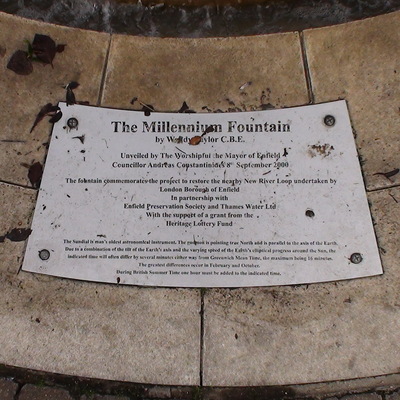Of the four lions that used to flank the entrance to the Imperial Institute two remain here, the other two were taken to the Commonwealth Institute in Holland Park.
2018: Helen Allen contacted us to say that the lions are by Harry Dixon, 1892, and we found confirmation of that at Liss Llewellyn. Thanks Helen.
Site: Queen's Tower - IC (2 memorials)
SW7, Imperial College Road, Queen's Tower
The day we visited seemed to be “Theodolite Day” – a local custom in which the lads and lasses bring their theodolites out onto the village green and, well, perform theodolisation, we guess.
A nearby information board gives: "The Queen's Tower is all that remains of the Imperial Institute, which was built to mark Queen Victoria's Golden Jubilee in 1887. It was 700 feet long with a central tower (the Queen's Tower) and smaller towers at the east and west ends {one tower at each end}. When it was to be demolished in the early 1960s, the Victorian Society and John Betjeman campaigned against total demolition and the Queen's Tower was saved.
The Queen's Tower is 287 feet tall, clad in Portland stone and topped by a copper covered dome. the internal wooden structure of the dome is an interesting example of Victorian craftsmanship. Near the entrance to the tower are two large stone lions. These are two of the four lions which flanked the entrance to the Imperial Institute. The other two are now at the Commonwealth Institute in Holland Park.
The belfry contains the Alexandra peal of 10 bells. Each bell is separately named after members of the Royal family - Queen Victoria, her three sons, her daughter-in-law Alexandra and her five Wales grand-children. the bells are now rung on Royal Anniversaries between 1 and 2pm."
The architect of The Imperial Institute was T. E. Collcutt. The building was demolished to make space for Imperial College which was expanding all around it.










Comments are provided by Facebook, please ensure you are signed in here to see them